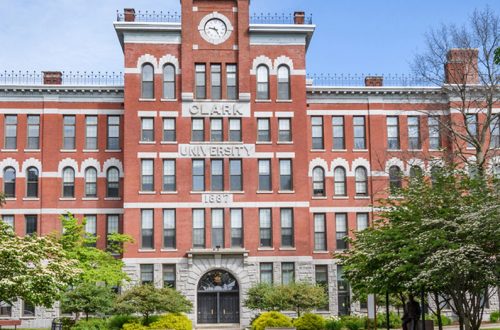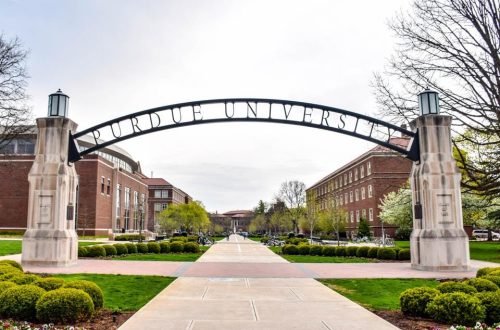How To Get Into Brown University: All You Need To Know
Brown University is a leading research university that’s also a member Ivy League. There are many top-notch programs at Brown University, as well as a dual degree program that the school offers with Rhode Island School of Design.
Brown University is a prestigious institution that receives thousands of applications each year. Students must do their best to secure a place in the next class. To increase admission chances and learn more about Brown University, read on.
Brown University: When do you apply?
Review the Brown application timeline to ensure you are ready to complete every step of the admissions process. Brown University follows a holistic admissions procedure, which requires that students follow a series of steps and submit documents within specific deadlines. Here’s a quick overview of Brown University’s admissions process. Also, be sure to keep an eye on the dates.
Deadlines for Brown Applications
Brown’s application deadlines may vary from one year of the academic year to another, but they generally fall around the same time. Students applying for the 2022-2023 admissions period will need to submit their applications by the following dates:
- Deadline for Early-Decision Applications: November 1 (11 :59 p.m. applicant’s time local)
- Online Early Decision Letters Available: Mid-December
- Regular Decision Application Deadline: January 5, 2011 (11:59 PM applicant’s time local).
- Online access to regular decision letters: March 31
- Commitment deadline for Regular Decision candidates: May 1
Brown University has two admissions options. Regular Decision is the preferred option. Students who are committed to Brown by the binding Early Decision procedure must complete their application before November. These students will find out their status at the end of December. Regular Decision round applicants must submit their materials by January 1st and Brown will respond by March 31st. These students must also decide if they want to enroll at the college before May 1.
Early, Regular, and Rolling Decisions
Students may be introduced to different admissions processes as they enter high school. The application process is generally the same regardless of when you start high school. However, it is important that you understand the distinctions between rolling admission, early action, and regular decision admissions options.
There are two types: Early Action or Early Decision. Early Decision is binding. Students who apply for college admissions early must enroll. Early Action admission does not have a binding effect. Restrictive Early Action (a type of early-action admission) is also available, although Brown University doesn’t offer it. Restrictive Early Action prohibits students from applying to any other college via an early admissions program. Generally, Early Decision and Early Action deadlines fall around November. Decisions about the next month are typically released around December.
Rolling admissions don’t have a specific deadline. Many schools that offer rolling admits (RA) accept applications between September and May. Despite this flexibility and the ease of applying, it is still a good idea to submit your applications as soon as you can. RA Schools accept applicants only up to their enrollment capacity. Brown University doesn’t offer rolling admissions.
Universities also offer regular round admissions. Regular round students must apply by January 31st. They are informed of their admissions results April 1st. Brown University has a regular-round admissions option.
Waitlisted Applications
Brown University admits only a small percentage of students due to the competition. The college cannot admit every qualified applicant on its waitlist. When Brown publishes its regular decision results, waitlisted students will find out they are on the waitlist. The waitlist allows students to decide whether or not they want to be on it. It is important to understand that admissions waitlists at Brown aren’t ranked. Brown admits students based on institutional needs to ensure that the class in the future is balanced.
Students who apply early decision cannot be waitlisted. These students could be deferred. This means that they may have their application moved to continue consideration in the regular round. Students are notified of their final admission decision when the regular admission decisions are made in March. Many students are curious to find out what to do if their application has been delayed. It is important to find out if Brown University remains your first choice college. It’s crucial to find out the materials that Brown University requires, if any (e.g. transcript), and send them in as soon a possible.
How hard is it to get into Brown? Early Prep
Brown University is a prestigious college. Each year thousands of students apply for Brown University’s seats. However, only a few of them are granted a place in Brown’s new class. Brown admission is competitive. However, students can improve their chances of being admitted by planning well ahead and researching the school to be an expert.
Create your Profile
Brown University receives a lot of applications every year. Students need to understand the requirements to be able to stand out among the rest. Brown University places most emphasis on academic achievement in its admissions process. Brown’s admissions officials will admit intellectually curious students if they are open to new challenges and willing to expand their horizons. Brown University’s website says that students must take at most four challenging courses each semester. However, a fifth course may be preferable. According to their website, students should also take a wide variety of classes. This includes four years of English or math and three to four years studying history, science, and languages.
Brown University is looking for applicants who are passionate about their interests and have a strong academic record. Brown refers to majors as "concentrations" and the university asks applicants to identify their top choice-concentrations on their application. Brown recognizes that not all students are ready to commit to one area of study. However, Brown asks applicants to identify their top choices concentrations to help them understand their academic interests.
Students should share their passions, the activities they have taken to follow them through high school and the benefits of Brown University for these pursuits. Writing should highlight students’ academic interests and extracurricular activities. Instead of trying to fill out their applications with all possible activities, applicants should focus on a few interests or activities they are passionate about and have spent a lot of time doing.
Visit the Campus to Take a Course
Visit Brown University if you are interested in Brown University. Registering to tour the campus is a great way to express your interest. This is something admission officers will consider when reviewing applications. Try to be allowed to participate in a class or have a discussion. You should also spend a lot of time walking around campus.
Get connected with a student
A student’s perspective can help you see the campus. You can reach out to any current students or friends to answer your questions. The admissions office may be able to help you connect with current students with similar interests.
Find out about any student experience
Brown’s tour guides will be current students. Ask your guide questions to get a better understanding of the student experience.
How do you actually get into Brown?
The bad news: There is no proven way to guarantee admission at Brown University. Good news is that there are steps you can do to improve your chances of getting in and stand out from the crowd.
Minimum GPA requirements
Brown University does not require a minimum GPA in high school to be admitted. The university insists on academic excellence as the main criteria for admission. 95% graduated in top 10% of high school classes, so it’s safe to say that Brown admissions are dominated by students with strong GPAs.
Scores for SAT/ACT
Brown students are not required to have a minimum SAT/ACT score to be admitted. This is similar to GPAs. The Composite SAT scores of the middle 50% of admitted students range from 1500 to 1570, and the ACT scores of the middle 50% between 33 and 36. Preparing for the SAT/ACT exam is the best way to succeed. You should start studying well in advance of your test date, by tutoring, practicing exams and doing self-study.
My personal statement is an expression of who I am and what I aspire to be. It outlines my goals and ambitions and conveys my enthusiasm for life and learning. I am driven to succeed and I am determined to make the most of any opportunity presented to me. I am confident that I will be able to make a positive contribution to any organization that I am a part of.
Personal statements are a chance to show your writing abilities and distinguish you from other applicants. The essay prompts are varied and students must choose between 250 to 650 words. Instead of worrying about how your essay should sound, you can let your personality and authentic voice shine through.
Essays
The university will ask you to respond to three Brown Supplemental Essay questions. This is to find out more about you and your potential role on campus. The responses must not exceed 200 words. These are the questions:
- Brown’s Open Curriculum allows students the opportunity to broaden their horizons while still focusing on academics. We would love to hear about your academic interests and discuss how the Open Curriculum might help you pursue them.
- Brown’s culture encourages students to challenge each other and receive criticisms in return. This fosters deeper and more clearer understandings of complex social issues. It is important to engage in dialogue outside of the classroom. Talk about a time when your perspective was challenged. What was your response?
- Brown students are deeply committed to their work and the wider world. Daily interactions and major discoveries provide students with meaning, contentment, and satisfaction. Share with us what brings joy to you, no matter how big or small, simple or amazing.
RISD Dual Degree Program with Rhode Island School of Design must answer one question:
- RISD Dual Degree Program draws on the complementary strengths of Brown University and Rhode Island School of Design (RISD) to provide students with the opportunity to explore diverse spheres of academic and creative inquiry, culminating in a capstone project that interrelates the content, approaches, and methods from two distinct learning experiences.
- Based on what you know about Brown’s academic program and the opportunities offered by the BRDD, tell us why the BRDD program would make a great undergraduate education. In your answer, please include a description of how you could contribute to the Dual Degree community. (650 word limit)
Recommendations letters
Brown University only requires two letters, but will accept four. Your passion for learning and your impact on the classroom should be highlighted in teacher recommendations. A counselor can give a statement about your character and your interactions with the community. Because counselors and teachers are likely to get many requests for letters, it is important to ask your instructors as soon as possible to ensure they have time to complete their letters.
Interviews for Admission
Students used to have the opportunity to interview Brown alumni to find out more about Brown and to tell Brown more about their lives. Brown announced recently that they no longer offer interviews. Instead, Brown suggests applicants submit a 2 minute video in which their introduction to Brown is made.
Contribution to Brown Community
Brown University admissions officers would love to accept applicants who are committed to making a difference in the Brown University community. Your goals and potential roles at Brown University should be highlighted in every step of the application process. You don’t need to be shy about naming specific clubs, classes, or research opportunities that interest you.
Student body composition
| Acceptance Rate | 5% |
| Number of students in a class | 2557 |
| Majors in Undergraduate Studies | Computer science and Econometrics, Quantitative Economics and Biology/Biological Sciences |
When you’re researching Brown University’s admissions process, make sure to check out the university’s class profiles. Although each school has a different set of information, most class profiles include the latest acceptance rate, class size, majors, and other important information. These details can give you a good idea of the college’s admissions standards so that you can assess your chances of being admitted.
What makes Brown University unique?
Brown University is unique because of many differentiators. Open Curriculum is the university’s hallmark. This allows you and your instructor to tailor your education. Brown doesn’t require students to complete a certain number of courses, which is a departure from many other colleges. Instead, Brown’s Open Curriculum allows for greater freedom in choosing what courses you wish to take and the freedom to do what interests you.
Extracurricular activities are available in a variety of ways. You can pick your classes. Brown University hosts more than 400 student groups, including the Debating Club and the Outdoor Leadership Team. Brown University also offers many athletic opportunities, including 34 intramural and 25 varsity sports teams.
Some must-see attractions are also available at the university. Brown is also the home to John D. Rockefeller Library. The John Carter Brown Library is an independent center that conducts advanced research in history. The RISD Museum in Providence is also close by, and houses an incredible collection of art from all over the globe. It has one of America’s largest collections of university art.
Brown is home to a number of notable alumni including Emma Watson and John Krasinski.
Assistance with getting accepted into college
College admissions counseling is beneficial for most students and their families, particularly if they are interested in applying to top-tier colleges like Brown University. The admissions counselor will provide personalized guidance to students throughout the entire application process. They can help them brainstorm ideas and create a balanced college listing.
Before you agree to work with a college counselor, you need to evaluate your readiness to put in the effort. College counseling is best enjoyed by students who are engaged and optimistic about their academic future. You should also ensure that you choose a qualified college admissions counselor with extensive admissions experience. You should do your research to find the right admissions counselor for you. Brown University is a top school in the country, and it can be hard to get into the university. IvyWise admissions experts can help. Set up a consultation and take the first steps towards your dream school.



